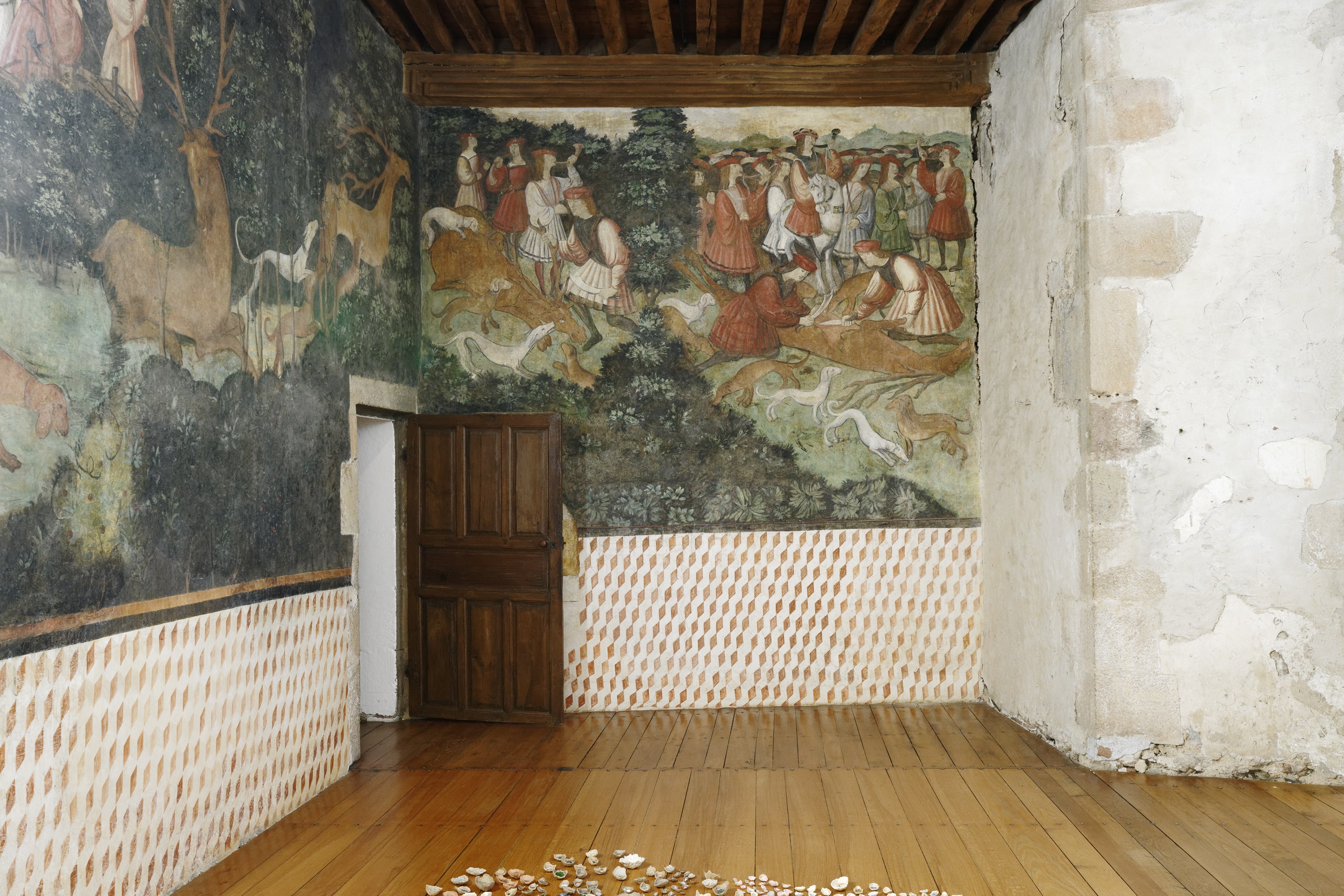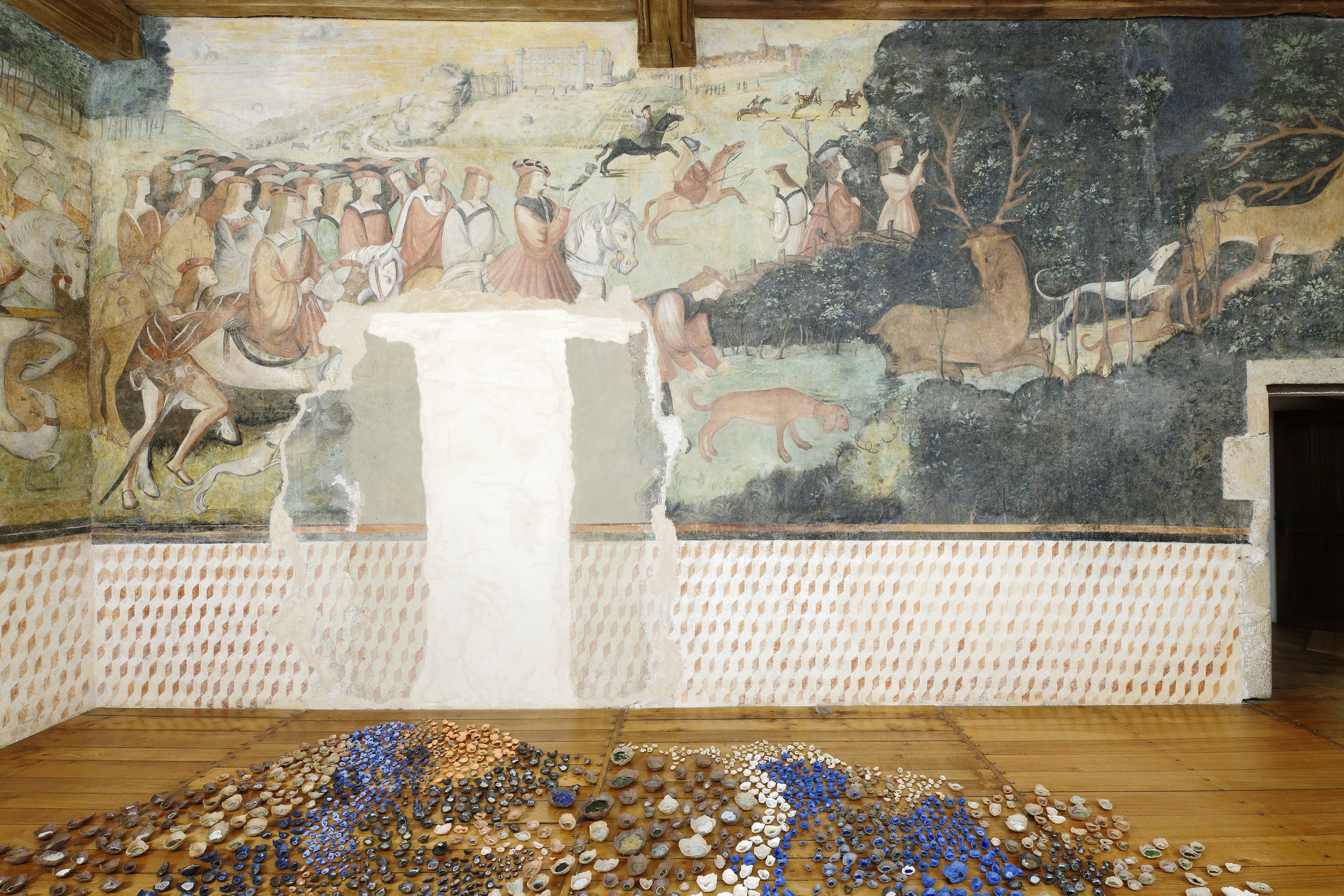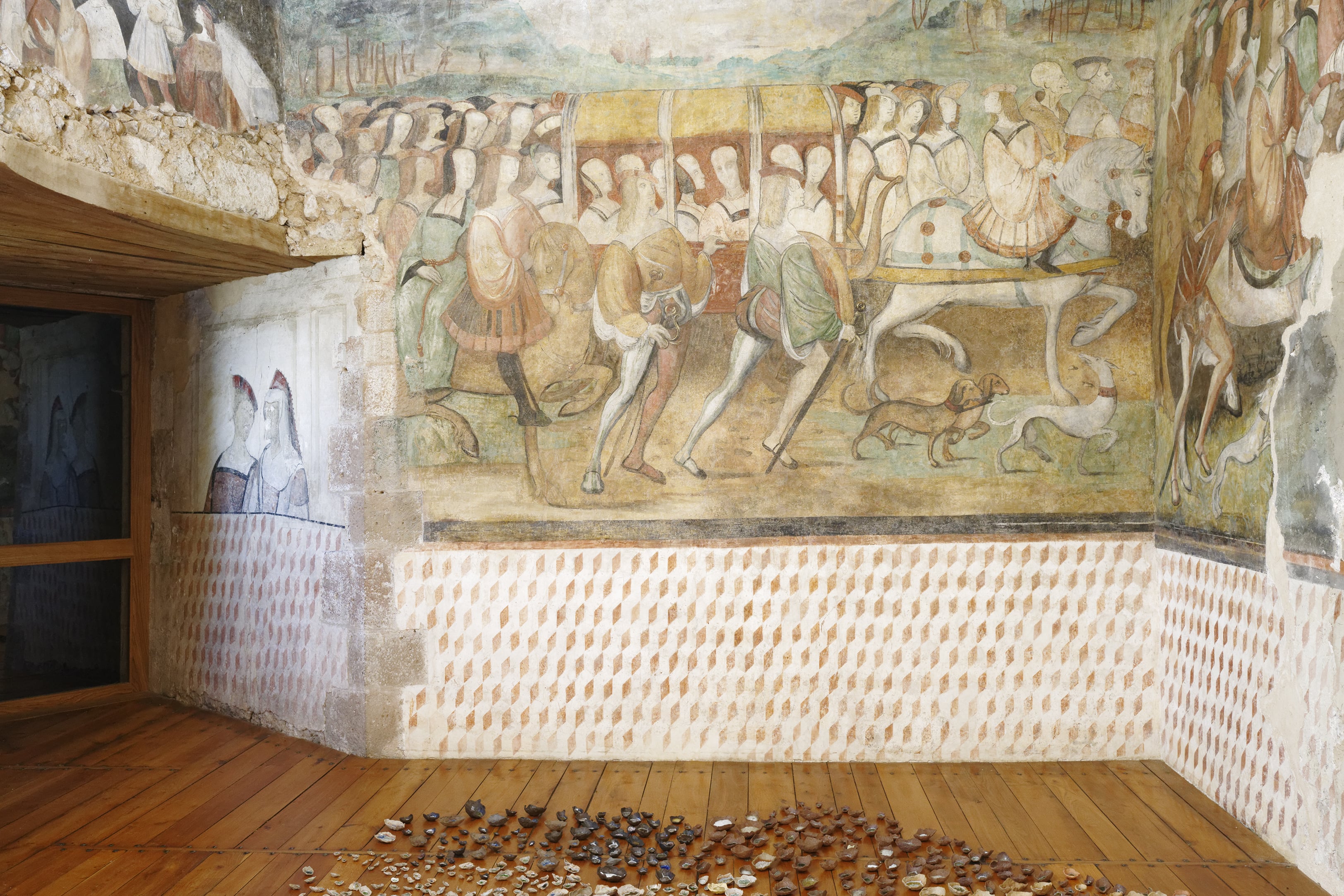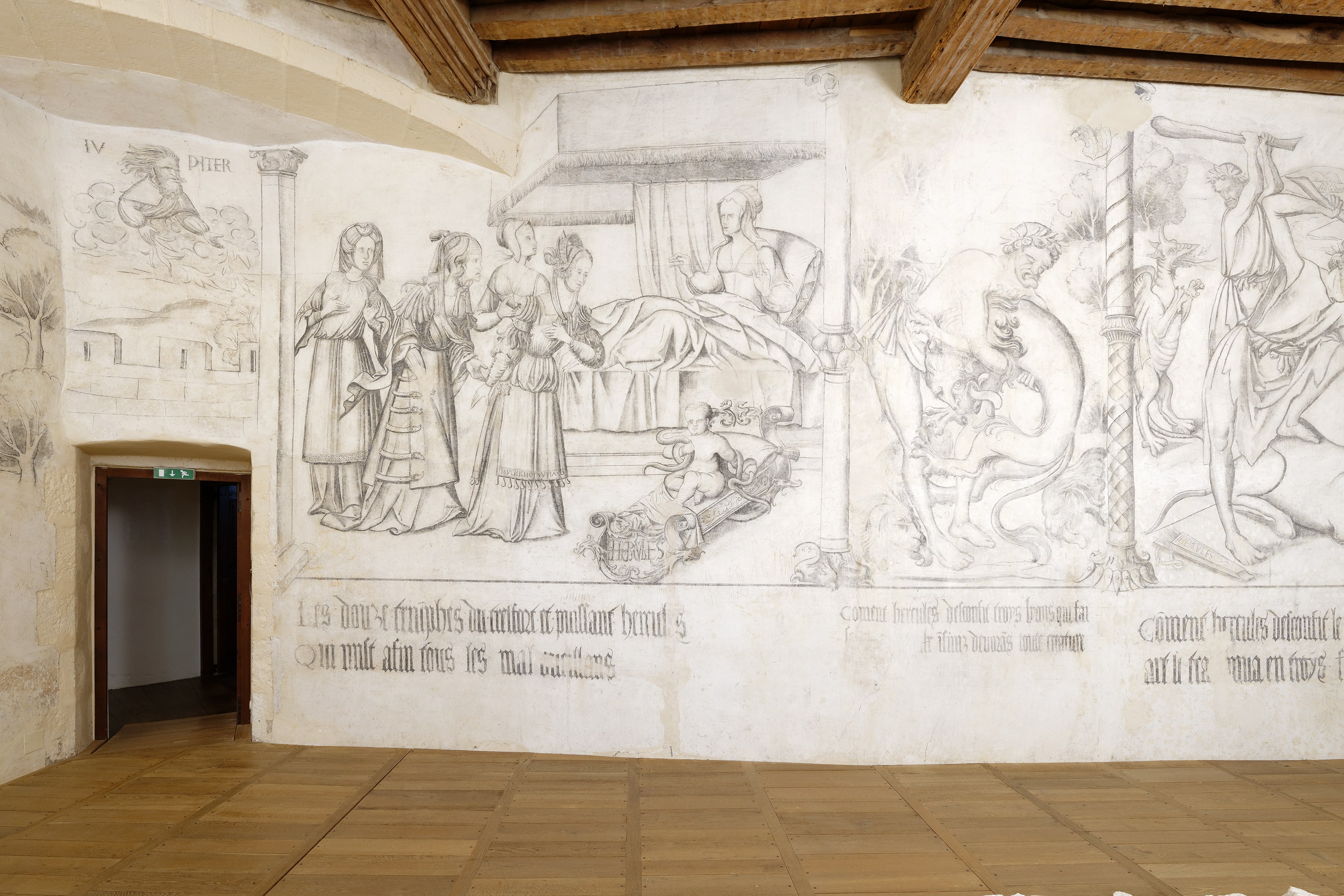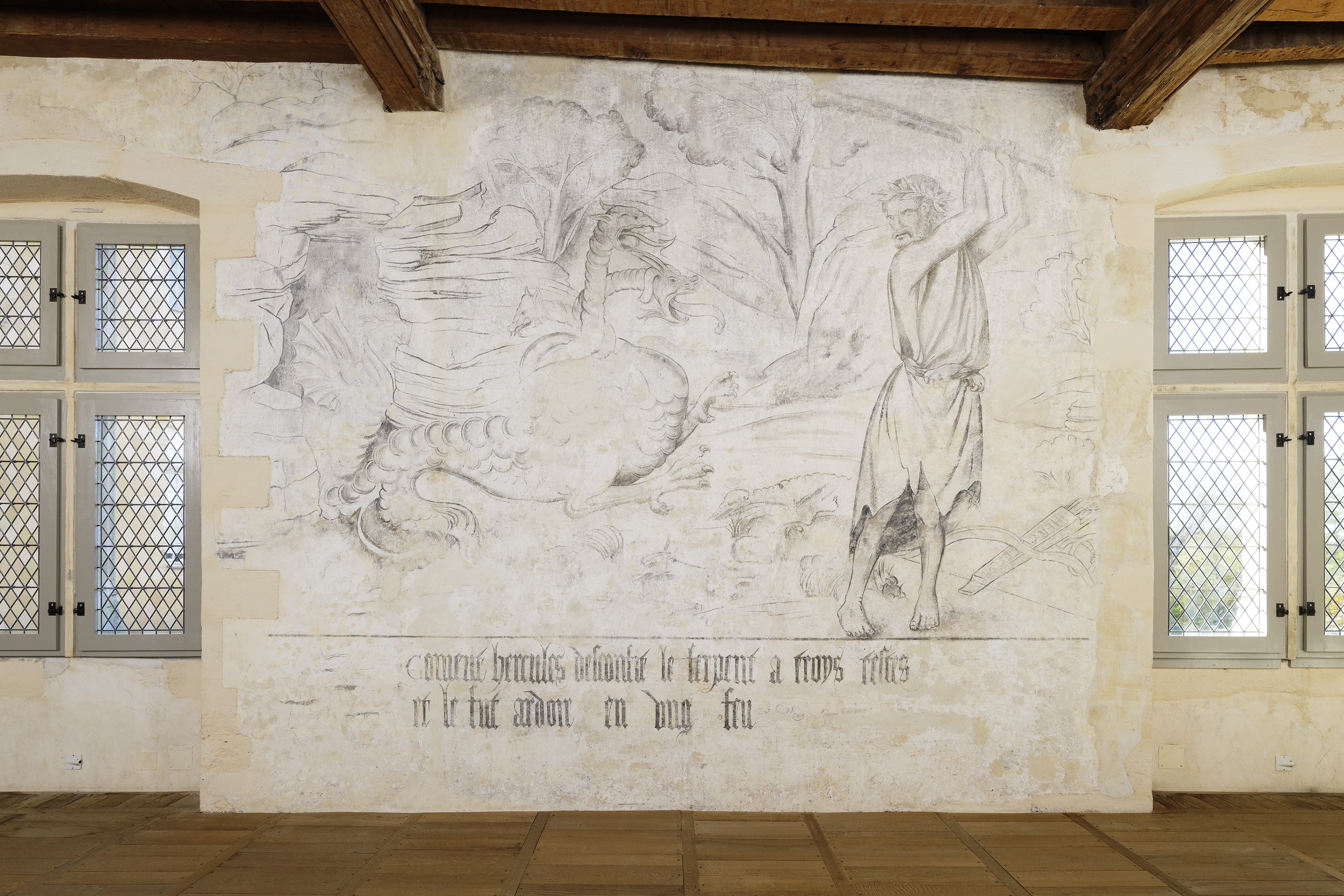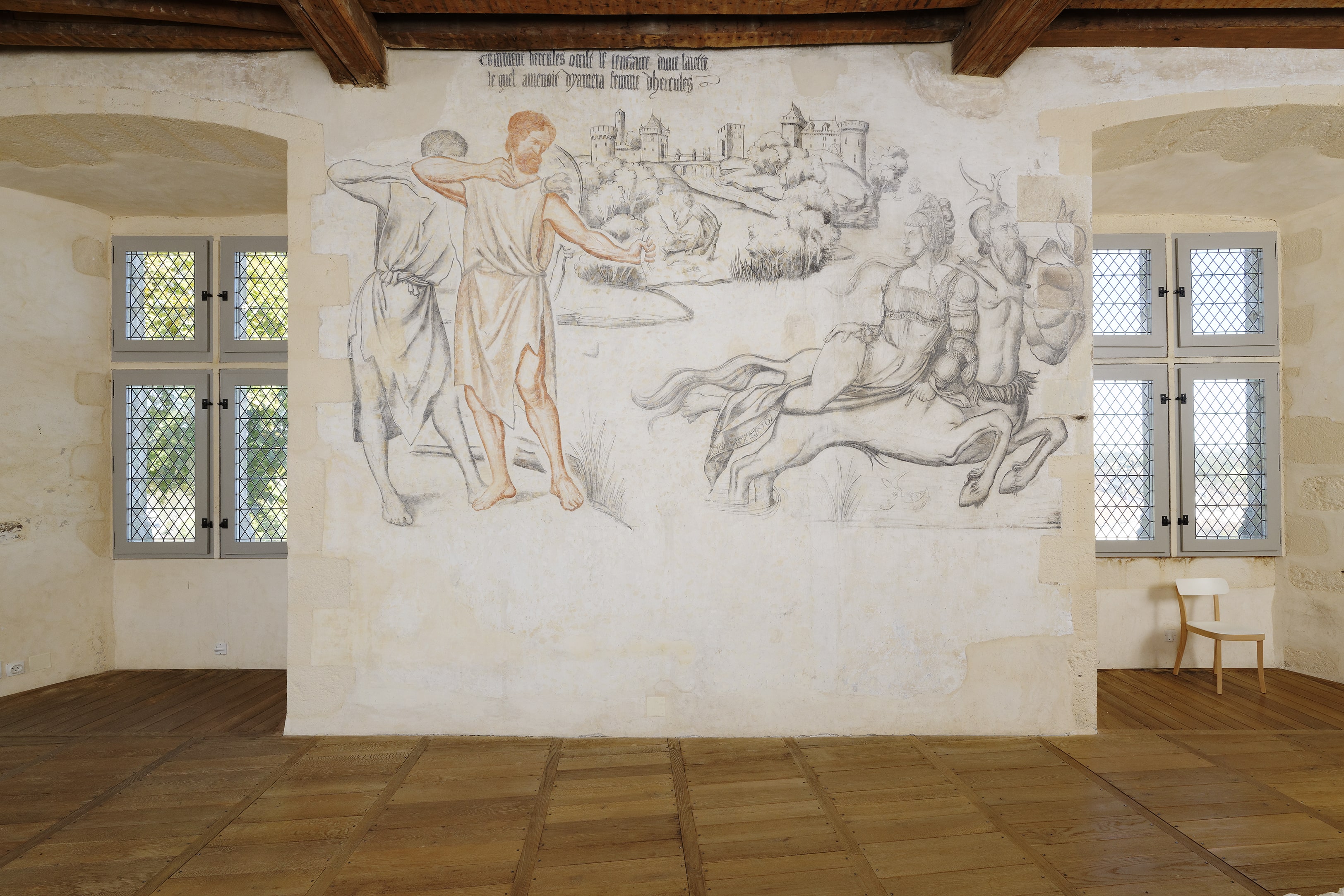The castle has rare examples of French Renaissance frescoes, which remained little known for many centuries. These two ensembles, which were created at an interval of just a few decades, are remarkable in that they offer a rare combination of the colourful wall frescoes that are characteristic of the style of the end of the Middle Ages and grisaille techniques (shades of grey only), which is an emblematic innovation of 16th century art.

La salle des chasses (Hunting Scenes Room)
Le chantier de reconstruction du château de Rochechouart à la fin du XVe siècle et au début du siècle suivant a inclus dans son programme l’embellissement des appartements seigneuriaux.
The fresque des chasses (fresco portraying hunting scenes) is on the first floor of the castle (which is the floor reserved for use by the lord of the château) in the wing overlooking the courtyard and town. This room appears to have a been a kind of ante-chamber, a chamber for withdrawing which communicated with the lord’s private chamber, which no longer exists, in the tour du Lion by means of a passage.
Intended for receiving visitors only, this room has no fireplace and was only furnished when it was used to welcome visitors. Its decor therefore symbolised the tastes, wealth and rank of the lord of the château.
Extending throughout the entire room, the richly coloured fresco in the Salle des Chasses dates from the very beginning of the 16th century. It depicts a day spent hunting deer in the castle grounds, preceded by a royal banquet. This room benefitted from a restoration programme between 1986 and 1991.
La galerie d’Hercule (Hercules’ Gallery)
Situated on the first floor of the château, which was reserved for use by the lord, in the apartments overlooking the courtyard and town, this work was created in the grand state room (aula magna).
This collection, which was partially exposed in 1883, but remained whitewashed, was rediscovered in 1965 and today remains one of the very rare examples of this kind of work to have survived in France.
The use of the grisaille technique marks a change in the methods used to depict or represent scenes in the first half of the 16th century. Prints of varying origins were used as iconographical models for the different scenes. We can spot Scandinavian influences in some of the costumes, as well as references to the Germanic artist Albrecht Dürer, and the Venetian, Zoan Andrea Valvassore.
The labours and feats of Hercules reflect the tastes of the wealthiest in society, who used his effigy to decorate their homes, and even identified with him and the courage and bravery with which he is associated (courteous Hercules). Hercules is a symbol of power since he is one of the images of the King of France. Hercules is presented as the ultimate man of virtue.

